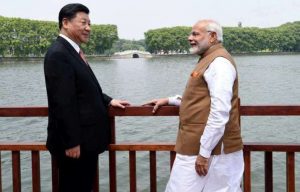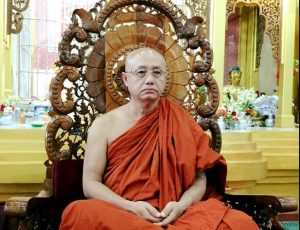
When the Gupta monarchies (240–550) fell, the rise of the succeeding Pālā rulers (750–1161) transformed the Indian subcontinent. The Pālā period was considered a renaissance for Bengali Buddhist heritage. The legendary King Gopāla I founded the Pāla dynasty in 750. His successor, King Dharmapāla (r. 783–820), was a great patron of Buddhism. Following the legacies of King Dharmapāla, his heirs continued to support Buddhism throughout medieval India and Bangladesh. The list of Pāla kings are as follows:
Gopāla I (r. 750–70)
Dharmapāla (r. 783–820)
Devapāla (r. 810–50)
Śūrapāla I (r. 850–56)
Vigrahapāl I (r. 856 to late ninth century)
Nārāyaṇapāla (r. 856 to late ninth Century)
Ājyapāla (r. 910–42)
Gopāla II (r. 942–60)
Vīgrahapāla II (r. 960–88)
Mahīpāla I (r. 988–1038)
Nayapāla (r. 1038–154)
Vigrahapāla III (r. 1054–55)
Mahīpāla II (r. 1072–75)
Śūrapāla II (r. 1075–77)
Rāmapāla (r. 1077–1130)
Kumārapāla (r. 1130–40)
Gopāla III (r. 1140–44)
Madanapāla (r. 1144–58)
Govindapāla (r. 1158 to mid-12th century)
Palapāla (late 12th century)
The growth of Buddhism went from strength to strength until the dynasty’s collapse. Pālā rulers wholeheartedly supported Buddhist education centers and monasteries, and frequently constructed stupas and Buddha images to memorialize the Buddha.
During the Pālā period, famous Buddhist sites were built. These include Trikutaka Vasu Vihāra at Mahasthangrah (Bogra), Sōmapura Mahāvihāra at Pahārpur (in the Naogaon district of Rajshahi division), Mainamoti Shalban Vihāra and Kanakstūpa Vihāra at Comilla, Pandit Vihāra at Chattogram, and Sitākot Vihāra at Dinajpur. At its zenith, the Pālā dynasty had the economic means to revitalize Buddhist culture throughout the Bengal Delta.

During the Pālā period, medieval Bangladesh produced numerous Buddhist scholars and monks, who became well known for their literary works and Buddhist propagation throughout Bengal and beyond. Born in the medieval period, Śāntideva (685–763) became renowned for his compositions of the Bodhisattvacaryāvatāra (A Guide to the Bodhisattva’s Way of Life) and Śikṣāsamuccaya (Training Anthology). In his literary work, he expounded the concept of bodhicitta, which insightfully instructed seekers along the path to wisdom and compassion. His works became especially renowned in Tibet.
An equally well-known scholar, the former chancellor of Nālandā University, Śāntarakṣita (722–88), was born in Zahor (present-day Bangladesh). He composed the Madhyamakālaṃkāra, which was a compiled version of the teachings from the Madhyamaka and Yogacāra schools. His Tattvasaṃgraha (Compendium on Reality) became famouse for its comprehensive treatment of the major philosophical views of his time.

Another figure instrumental in the growth of Buddhism was Atīśa Dīpaṃkaraśrījñāna (980–1054), who was born in the Vajrayoginī-affiliated village of Bikrampura (in present-day Dhaka, the capital of Bangladesh) during the Pālā period. Atīśa was the son of King Kalyāṇaṥrī and Queen Prabhavati Devi, or Śrīprabhā. As he had generated an ardent faith in the Buddha’s teaching as a young man, he was ordained as a Buddhist monk and traveled to Suvarṇadvīpa (present-day Indonesia) for higher education in the Buddhist scriptures. He stayed in Suvarṇadvīpa for 12 years, where Ācāriya Dharmakīrti taught him the practice of bodhicitta. After Atīśa returned to his homeland, the ancient Pāla kings in Bangladesh, Mahīpala, and Nayapāla appointed him as the high priest or chancellor of Vikramaśīla, one of the super-monasteries or monastic universities of South Asia.
Vikramaśīla was established by King Dharmapāla (783–820) of the Pāla dynasty and was considered a sister school to the estimable Nālandā, another super-monastery or monastic university. With a vision for the propagation of Buddhism outside of medieval Bangladesh and India, Atīśa Dīpaṃkaraśrījñāna journeyed to the Himalayan region and into Tibet, where he resided for 17 years. As an elderly person, it became difficult for Atīśa to return to Bangladesh, and he lived in Tibet for the remainder of his life. Atīśa’s dedication to Buddhist propagation became part of the Second Diffusion of Buddhist teachings in Tibet.
A prolific Buddhist thinker, Atīśa compiled numerous texts, such as the Bodhipathapradīpa, Cārya-sangraha-pradīpa, Satya-dvyavatāra, Vimala-ratna-lekhā, Bodhisattva-manyavāli, Madhyamāka-ratna-pradīpa, Mahāyāna-patha-sāhana-saṅgraha, śiksa-samuchchaya Abhisamya, Prajñā-pāramita-pinḍartha-pradīpa, Ekavira-sādhana, pradip Prājikā, Budhipat Pradīpa, Ratna Karandowtghat Madhyamopadeśa, Sangrahagarbha, and the Hridayaniscita. The Bodhipathapradīpa (A Lamp for the Path to Awakening) is considered one of his masterpieces, in which he summarized and simplified the Buddha’s teachings within 68 verses. Atīśa’s teachings and textual compilations were expounded by his disciples down the centuries, and have enriched both Mahāyāna and Vajrayāna traditions.

Two more great Buddhist masters, Tilopa (988–1069) and Nāropā (1016–1100), were born in medieval Bangladesh during the Pālā period. Both teachers taught at Sompuri Mahāvihāra (in Naogoan District of present-day Bangladesh), which was erected by Dharmapālā in the eighth century. Tilopa and Nāropā taught the secrets of tantric practices and in particular became experts in the Great Seal or Mahāmūdra, which later spread beyond Bengal. Sompuri Mahāvihāra, the magnificent past of ancient India and Bengal where renowned Buddhist masters like Atīśa Dīpaṃkaraśrījñāna taught seekers and devotees. The monastic university of Sompuri Mahāvihāra, also known as the “City of Moon,” was far from urban areas in the east. Sompuri Mahāvihāra’s impressive site was excavated in 1936 near Paharpur District in Rajshahi Division.
During the Pālā dynasty, Bengali literature reached a zenith. The classical Bengali composition of the Charyapada was composed during the Pālā reign. The Charyapada is a collection of mystical poems and songs of realization in the Vajrayāna and Tantric traditions. Twenty-two prominent scholars compiled 47 verses (padā), which were written from the 8th–12th centuries. The Charyapada would come to be discovered by Haraprasad Shastri in 1907.

The advanced development of Buddhist culture, literature, and monasteries (which would become valuable archeological sites) during the Pālā dynasty, is frequently celebrated as a golden age for ancient Bangladesh. Mahāyāna and Vajrayāna traditions simultaneously flourished throughout the region until 1161. After the Afghan conqueror, Ikhtiyār Al-Dīn Muḥammad Bakhtiyār Khalji invaded ancient Bangladesh in 1203, the glorious Buddhist heritage of ancient Bangladesh fell out of royal favor and declined relatively rapidly.
The Pāla Dynasty (750–1161) is still fondly remembered for generously supporting Mahāyāna and Vajrayāna traditions in medieval Bengal. During that time, major Buddhist institutions, such as Nālandā Mahāvihāra, Vikramaśīla Mahāvihāra, Sompuri Mahāvihāra, and Shalban Mahāvihāra consolidated Buddhism and elevated it to a protected, elite faith tradition. Apart from their generous contribution the Buddhist traditions, the rulers of the Pāla Dynasty graciously supported enriching the arts, literature, and cultures throughout the territory of Bengal.
References
Barua, Shimul. 2021. Mānaba Cintanē Bud’dha Cintā-Jāgaraṇē [The Buddha’s Insights for Humankind] Chattogram: The Kharimāṭi Printers.
Barua, Shimul. 2012. Bānlāra Baud’dha: Itihāsa-Aitihya O Sanskr̥ti (Buddhism in Bengal and its History, Traditions, and Culture). Chattogram: Anōmā Sanskr̥ti Gōsṭī.
Chowdhury, Sanjoy Barua. 2024. A Forgotten Inscription on the Narrative Study of Buddhist Traditions in Boṅgabhūmi: Past through Present.” In Studia Orientalia Slovaca.
Dipankar Srijnan, Barua. 1998. Buddhism in Bengal: The Period of Propagation in Buddhism in Bangladesh, Dhaka: Sougata Publication.
Dipankar Srijnan, Barua. 2007. Bāṅgāli Baud’dhadēr itihāsa Dharma O Sanskr̥ti [A Study of Bengali Buddhist History, Tradition, and Culture]. Chattogram: Bangladesh Pali Sahitya Saminti.
Dipankar Srijnan, Barua. 2017. Buddhism and the Buddhists of Bangladesh. Chittagong: Renu Ad & Printing.
Related features from BDG
Ācāriya Pūrṇāchār Chandramōhan Mahāsthabira (1834–1907): The Life and Work of the 2nd Saṅgharāj of Bangladesh
The Legacy of Unainpūrā Laṅkārāma: A Historical Monastery of Theravāda Buddhism in Boṅgabhūmi
Āryaśrābaka Gyaniswer Mahāsthabir (1887–1974): The Life and Legacy of a Seminal Bangladeshi Theravada Master














